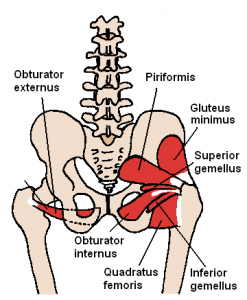The New York Times Health section discusses a study from the University of Colorado in Boulder comparing the metabolic costs of running in shoes vs running barefoot. The results suggest that shod running is more energy efficient than unshod running. These results deserve a few questions. First some background on the study.
Subjects of the study were 12 barefoot runners–runners who knew how to run barefoot in contrast to novice barefooters. “It was important to find people who are used to running barefoot,” says Rodger Kram, a professor of integrative physiology, who oversaw the study.
These runners were then asked to run several times in a yoga sock on a treadmill or while wearing the 150 gram Nike Mayfly, a lightweight running shoe. Then the researchers taped 150 grams’ worth of thin lead strips to the top of runners’ sock feet. By adding an equal amount of weight to the bare foot, they could learn whether barefoot running or shod running was more efficient. The study reports these findings:
1. For every 100g (3.5oz) (the average weight of a deck of playing cards) added per foot, energy cost increases by approximately 1% whether running barefoot or shod.
2. Running barefoot and in lightweight shoes do not significantly differ in energy cost.
3. When controlling for shoe/foot mass, running in lightweight shoes requires ~3-4% less energy than running barefoot.
So it seems that wearing a shoe is a good idea if you want to conserve energy as you run. This would be important obviously during a race. Here are some questions and observations:
1. The positive result of wearing a shoe was seen in 8 of the 12 runners. That means 1/3 of the subjects saw no advantage from running in shoes. Extrapolated out to a large population that means a significant number of barefoot runners are at no disadvantage running in bare feet. I wonder if any of them are more efficient in bare feet?
2. The study was done on a treadmill. Treadmill running is quite different from real running. What if the study was done on a road or trail?
3. The study looked at the Nike Mayfly. What about other shoes? It’s a light shoe. Would even lighter shoes be better efficiency?
4. A commentator on the Times article made the following observation: “Flaw: the only way for the comparison to be valid is if the weight distribution of added weights were precisely the same as the weight distribution of the shoes themselves. Anyone who has ever studied the effects of mass distribution on movement would know that.”
So did the way the weight was added to the (mostly) bare feet affect the runners’ efficiency? What if the weight was distributed differently?
5. The study enlisted experienced barefoot runners as subjects. Alex Hutchinson of Sweat Science and Runner’s World discusses that issue:
Finally, all the runners were midfoot or forefoot strikers, both barefoot and in shoes. This condition was imposed to prevent confounding effects from comparing rearfoot to forefoot striking efficiency.
These conditions raise an important caveat. One of the proposed advantages of barefoot-minimalist running is that it automatically helps to correct overstriding — an extremely common problem among inexperienced runners. The fact that all these runners were already forefoot strikes suggests that none of them were likely overstriding, which would make them less likely to benefit from barefoot running. It’s possible that a truly ‘random’ group of runners might have been less efficient in the shod condition, because more of them would have been dramatically overstriding.
It’s good that someone has done this study. The debate isn’t over and it’s always good to have another view. There’s plenty more studying to be done.
One thing that I keep coming back to is the fact that the fastest runners in the world wear shoes–at least when racing. So from the performance standpoint there seems to be some benefit to putting something on your feet. Further, if you’re happy with you performance and enjoyment of running then you should probably stay with what you’re doing whether it’s shod or unshod.


